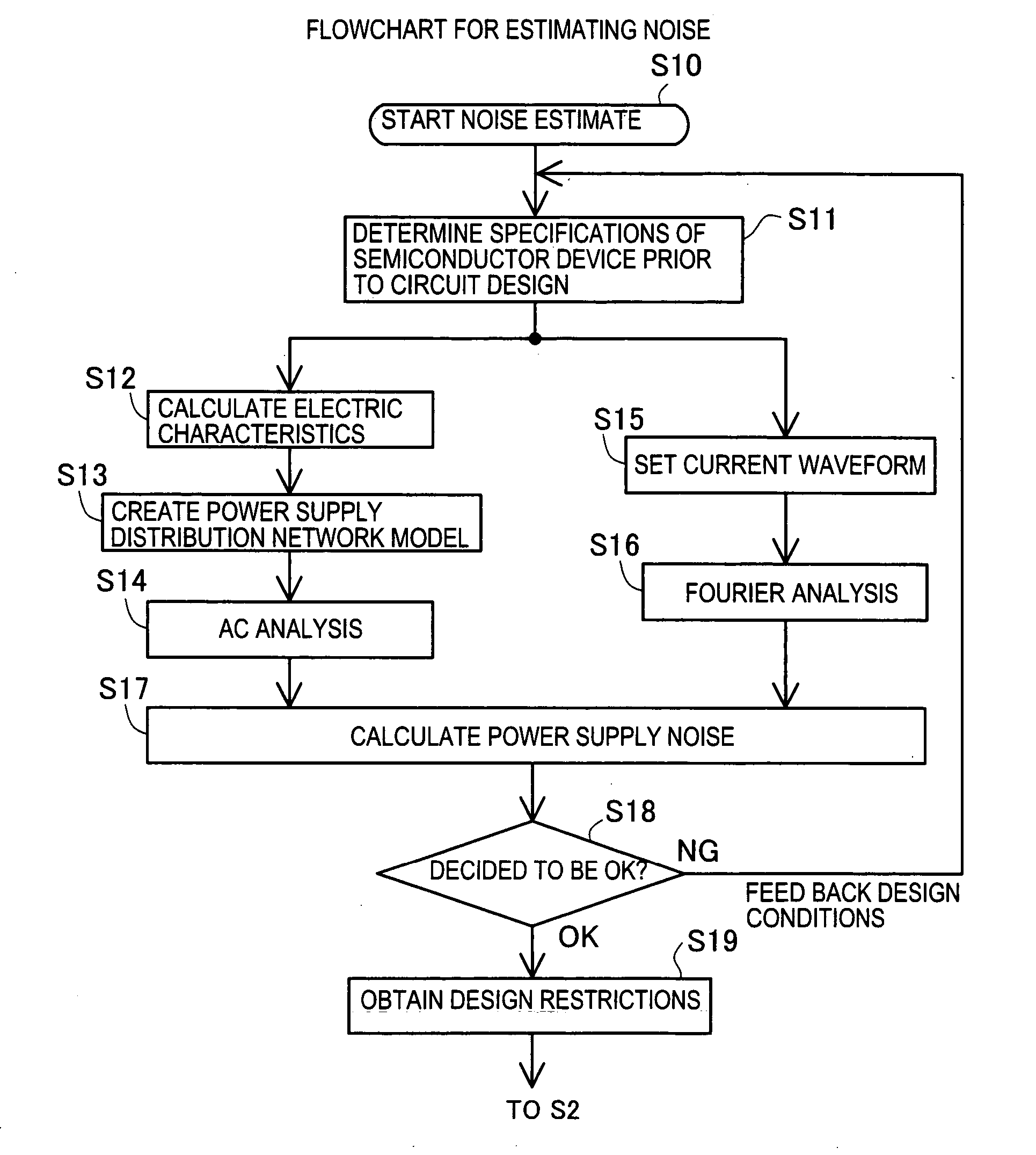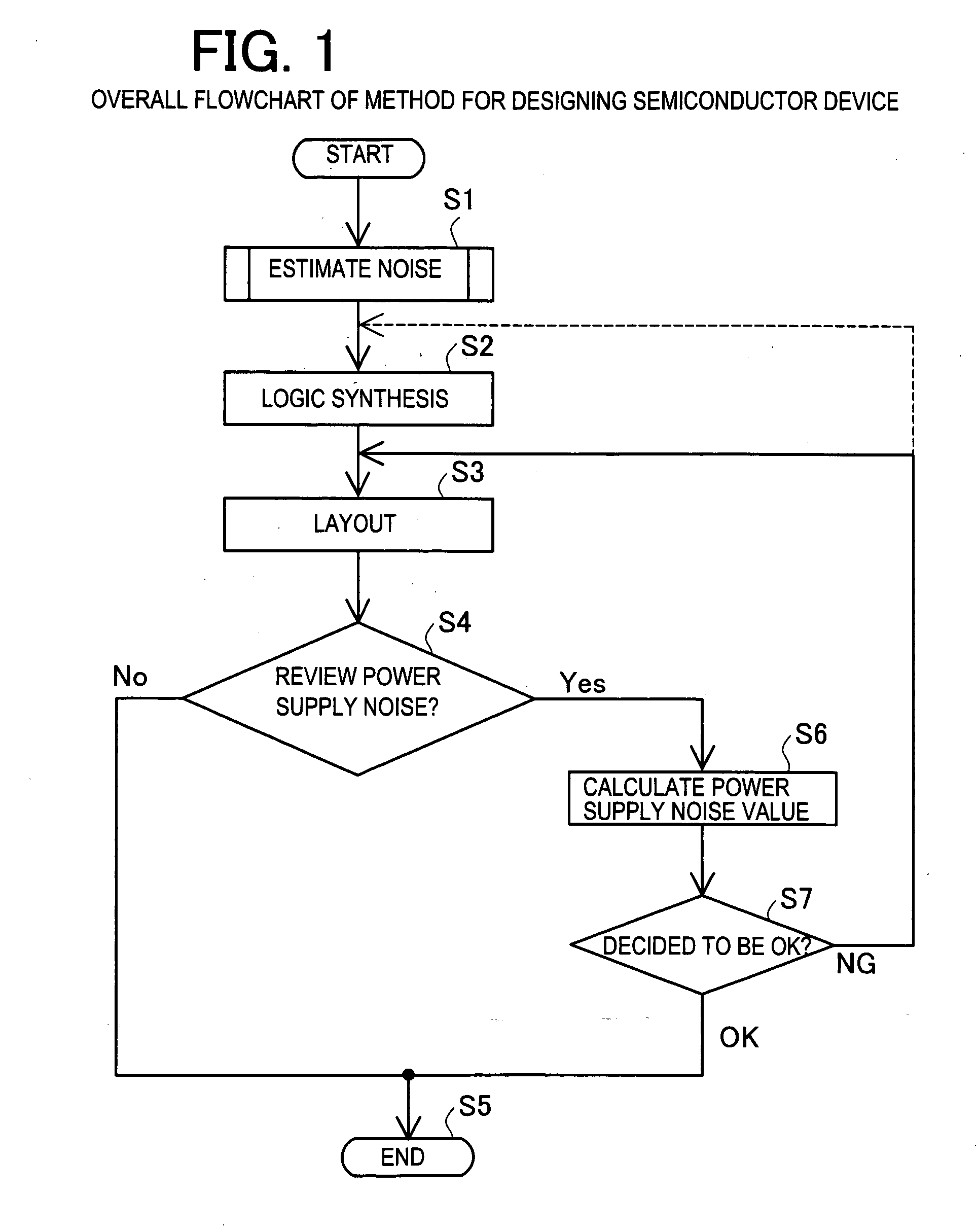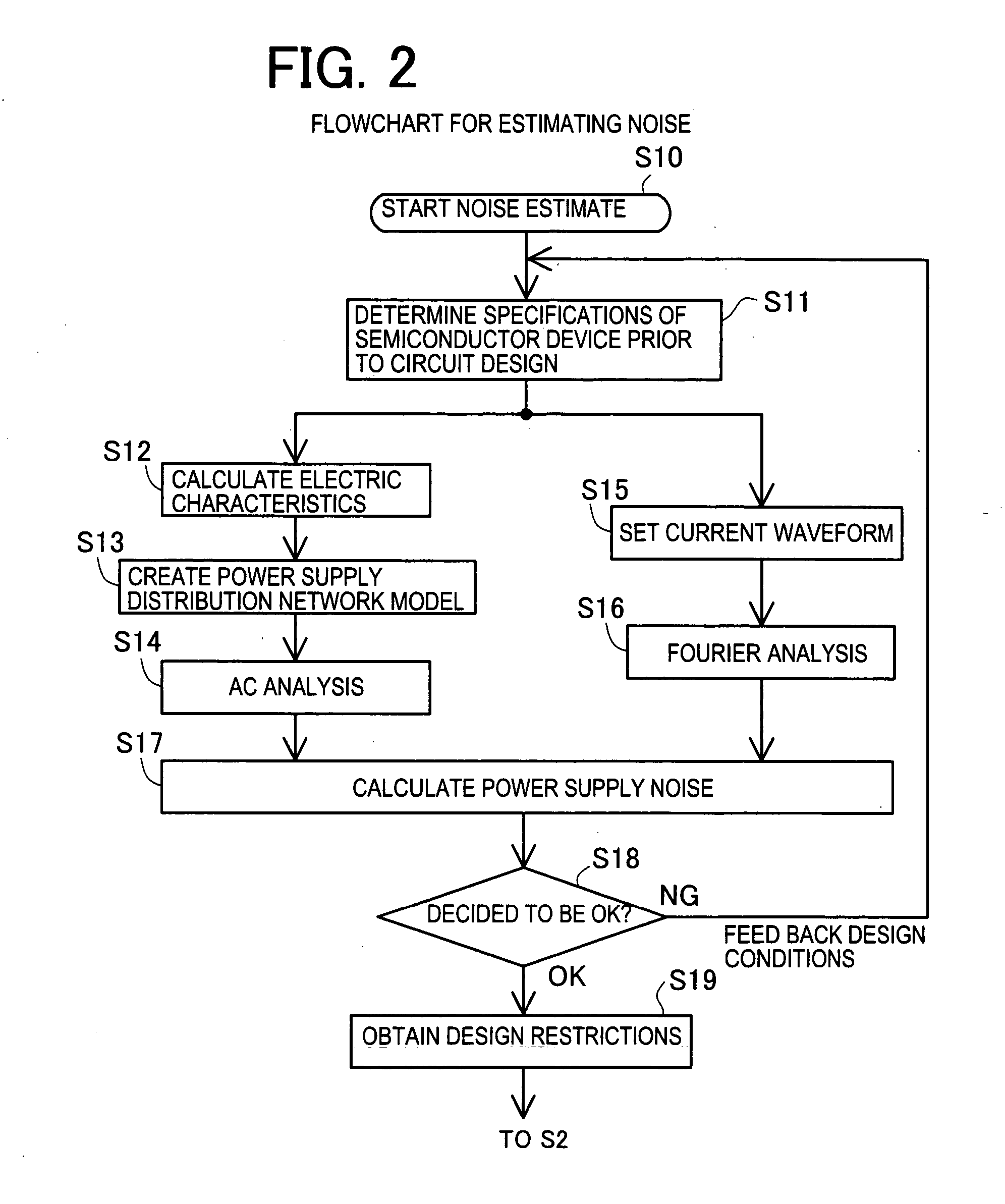Method and program for designing semiconductor device
a semiconductor and program technology, applied in the field of method and program for designing a semiconductor device, can solve the problems of not being able to reduce design time, no method for grasping noise value, and much time to improve noise characteristics, so as to reduce the time required and reduce the noise of the power supply
- Summary
- Abstract
- Description
- Claims
- Application Information
AI Technical Summary
Benefits of technology
Problems solved by technology
Method used
Image
Examples
Embodiment Construction
[0027] The following will describe, in detail, preferred embodiments of a semiconductor device design method related to the present invention, with reference to drawings based on FIGS. 1-11. It is to be noted that a concept of the semiconductor device design method contains a semiconductor device manufacturing method. FIG. 1 shows an overall flowchart of the semiconductor device design method related to the present invention. Prior to a circuit design (step 2, hereinafter abbreviated as S2) through logic synthesis and layout (S3), as a pre-stage of starting design, the process estimates a power supply noise value at S1. Contents of S1 are described along a flow of FIG. 2. The flow of FIG. 2 is roughly divided into three steps. From S12 to S14, the process creates a power supply distribution network model that covers from a power supply section of this semiconductor device to a ground potential based on electric characteristics obtained in accordance with specifications of the semico...
PUM
 Login to View More
Login to View More Abstract
Description
Claims
Application Information
 Login to View More
Login to View More - R&D
- Intellectual Property
- Life Sciences
- Materials
- Tech Scout
- Unparalleled Data Quality
- Higher Quality Content
- 60% Fewer Hallucinations
Browse by: Latest US Patents, China's latest patents, Technical Efficacy Thesaurus, Application Domain, Technology Topic, Popular Technical Reports.
© 2025 PatSnap. All rights reserved.Legal|Privacy policy|Modern Slavery Act Transparency Statement|Sitemap|About US| Contact US: help@patsnap.com



